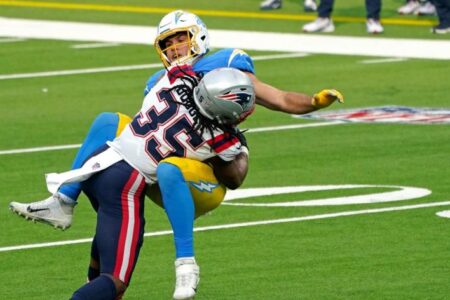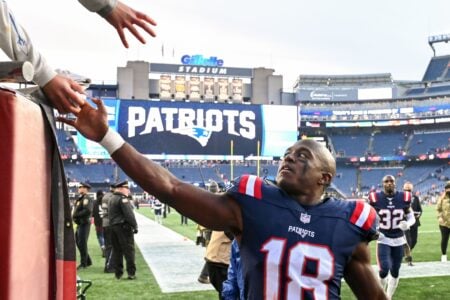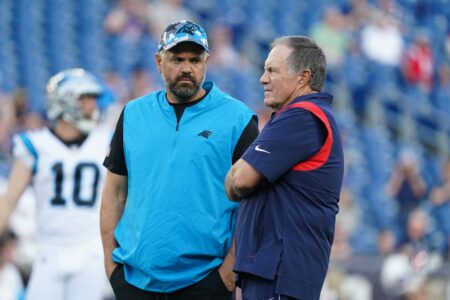fester
Third String But Playing on Special Teams
- Joined
- Feb 7, 2005
- Messages
- 530
- Reaction score
- 88
How should we categorize how the Patriots look at what types of players are considered a "3rd round value" or a "7th round value" or a "high 1st rounder". We know that the Patriots definately grade against both the current year relative scale and against an absolute scale. There was a comment that Kareem Brown (4th Round 2007 draft) had a lower grade than the two offensive lineman drafted at the 190s or 210s during the 2009 draft.
How should we categorize with a soft qualitative prism for the various rounds. I propose the following schema based on observations of all the Belicheck era Patriots' drafts:
Top half of 1st round --- PROTOTYPE players, these are guys where there are no questions about their size, speed, strength, experience, football smarts, and dedication. Projection is needed as there is a big jump from the NCAA to NFL, but it is minimized. Best examples are Seymour and Wilfork on the D-line. Potential exception(s) are Mayo (a little short but this has worked out) and Meriweather (attitude/coachability). Chandler Jones is a Prototype size player with a minor question on college projection.
late 1st to late 2nd Round --- [strike]Boom or Bust players[/strike] Tarnished Prototypes --- These are almost prototype players with a major question mark. If a prototype player falls, the Patriots will do the happy dance when grabbing him. Gronkowsi is a success story while Ron Brace and Darius Butler are failures. Gronk had injury history issues despite prototypical size, while Brace had production questions despite prototypical size/strength.
Late 2nd to end of the 3rd round --- Core niche players --- these players should be very good at one aspect of the Patriots and can fill one role well. They may have the potential to develop into something more, but by now the chances of Pro-Bowl success are low. Vereen was drafted to be Faulk's replacement, Ridley was drafted to be a 2 down back, Mallet was drafted to be a #2 quarterback with upside. Price and Tate were drafted to be legit outside receivers (neither were) etc.
4th-5th round --- Either Blue Light specials for dinged goods (Hernandez/Cannon) or intriguing physical prospects with major question marks (ie Asante Samuels was seen as a pure zone corner with size issues as a success story, or Klecko who had great production/intangibles in a less than ideal tangible package for a mild failure) or Super Core special teamers.
6th/7th rounds --- Do 1 thing well or even more value shopping for troubled talent (Dennard)
How should we categorize with a soft qualitative prism for the various rounds. I propose the following schema based on observations of all the Belicheck era Patriots' drafts:
Top half of 1st round --- PROTOTYPE players, these are guys where there are no questions about their size, speed, strength, experience, football smarts, and dedication. Projection is needed as there is a big jump from the NCAA to NFL, but it is minimized. Best examples are Seymour and Wilfork on the D-line. Potential exception(s) are Mayo (a little short but this has worked out) and Meriweather (attitude/coachability). Chandler Jones is a Prototype size player with a minor question on college projection.
late 1st to late 2nd Round --- [strike]Boom or Bust players[/strike] Tarnished Prototypes --- These are almost prototype players with a major question mark. If a prototype player falls, the Patriots will do the happy dance when grabbing him. Gronkowsi is a success story while Ron Brace and Darius Butler are failures. Gronk had injury history issues despite prototypical size, while Brace had production questions despite prototypical size/strength.
Late 2nd to end of the 3rd round --- Core niche players --- these players should be very good at one aspect of the Patriots and can fill one role well. They may have the potential to develop into something more, but by now the chances of Pro-Bowl success are low. Vereen was drafted to be Faulk's replacement, Ridley was drafted to be a 2 down back, Mallet was drafted to be a #2 quarterback with upside. Price and Tate were drafted to be legit outside receivers (neither were) etc.
4th-5th round --- Either Blue Light specials for dinged goods (Hernandez/Cannon) or intriguing physical prospects with major question marks (ie Asante Samuels was seen as a pure zone corner with size issues as a success story, or Klecko who had great production/intangibles in a less than ideal tangible package for a mild failure) or Super Core special teamers.
6th/7th rounds --- Do 1 thing well or even more value shopping for troubled talent (Dennard)
Last edited:


















